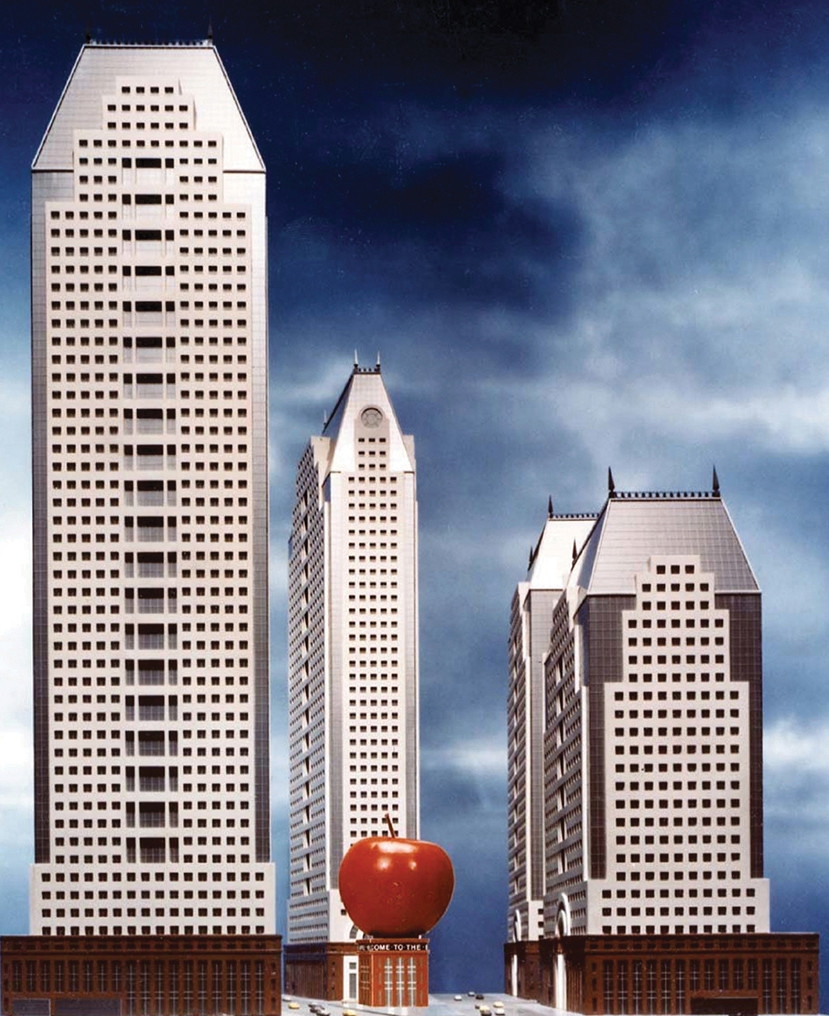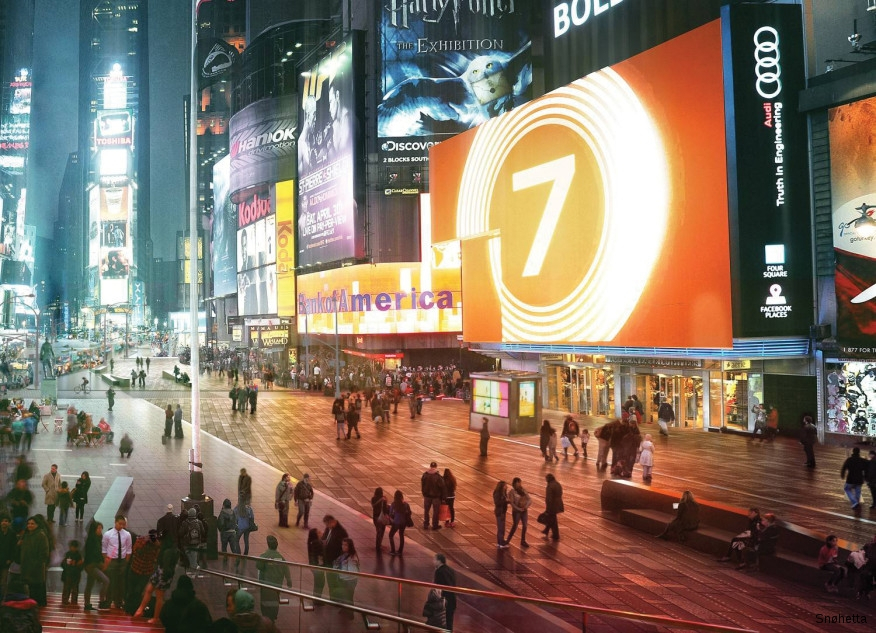How the power of glitz (and some topless ladies) helped Times Square emerge as a genuine public space.
Back in August, there was a classic New York City dust-up: dozens of scantily clad women with their breasts painted, generally in patriotic colors, were posing for photos with Times Square tourists in exchange for tips. “What happened was there’s five days in a row of naked ladies on the cover of The Daily News,” recalls Tim Tompkins, president of the Times Square Alliance, a nonprofit that is a tireless booster for the area. Whether or not this latest panhandling scheme—a bawdy offshoot of Times Square panhandlers dressed as Sesame Street’s Elmo or Sanrio’s Hello Kitty—merited its own media blitz is hard to say, but it was clearly making money for the tabloids.
The irony of the desnudas controversy is two-fold. First, the reason that the police couldn’t somehow make the naked women go away is that Times Square isn’t a public place in the normal sense of the term. Broadway, pedestrianized or not, is still a street, not a park or a plaza, and streets, it seems, are a gray area, subject to “legal ambiguities,” according to the alliance.
The other twist is that much of Times Square as it existed prior to the late 1990s was, in fact, condemned and bulldozed to rid the area of all manner of vulgarity. A premier entertainment destination that, by the 1970s, was overrun with peep shows, porn theaters, massage parlors, and other disreputable enterprises, Times Square was reconceived, tabula rasa, as just another midtown office district with a few nice venues on 42nd Street for, say, Shakespeare.
....



